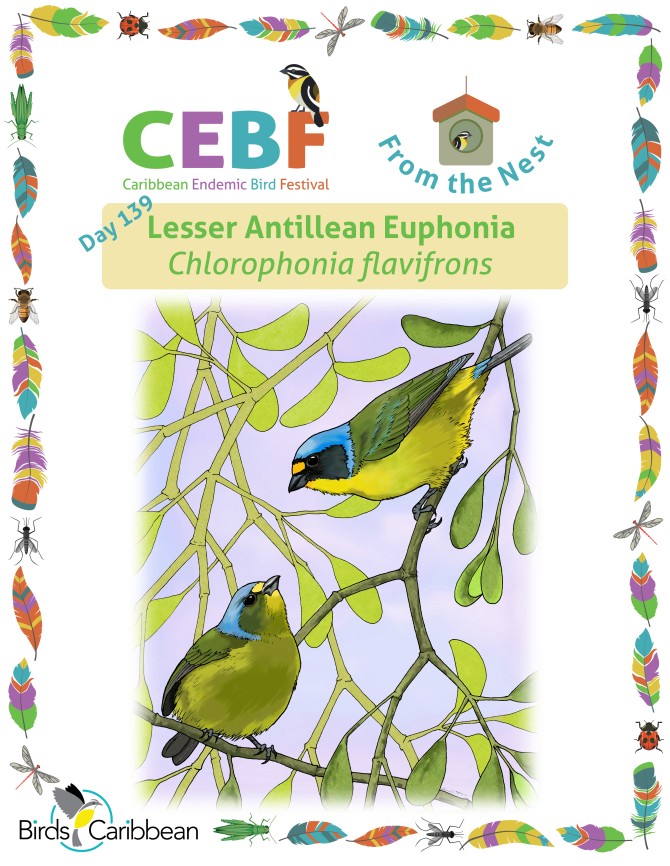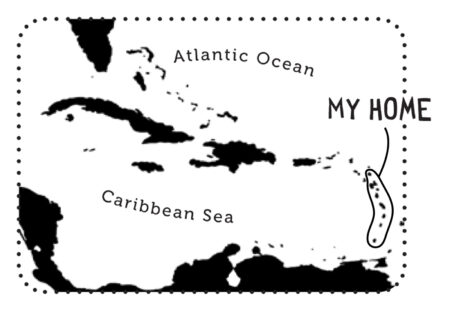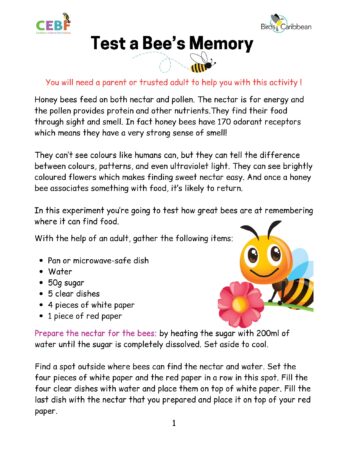Celebrate the Caribbean Endemic Bird Festival (CEBF) with us! Our theme in 2024 is “Protect Insects, Protect Birds”—highlighting the importance of protecting insects for birds and our environment. Have fun learning about a new endemic bird every day. We have colouring pages, puzzles, activities, and more. Download for free and enjoy learning about and celebrating nature!
Endemic Bird of the Day: Lesser Antillean Euphonia
This tiny flitting endemic icon can be found on not one, not two, not three, but nine islands in the Lesser Antilles (Barbuda to Grenada). The Lesser Antillean Euphonia is a brilliantly colored bird. The male has a sky-blue helmet, olive-yellow underparts, a bright yellow patch on the throat and forehead, a dark mask, and an olive-green back. Although males and females are similar in appearance, the female is more uniformly olive-green and has a smaller yellow forehead patch.
Lesser Antillean Euphonias are predominantly a species of dense forests, from dry lowlands to wet mountain tops. They can be found in most available habitats and adjacent disturbed areas, especially where mistletoe is present. Why mistletoe? Mistletoe berries are their favorite food! Like many other plants, mistletoe are dependent on birds to disperse their seeds but the way this happens is remarkable. Euphonias break open the outer shell of the fruit and swallow the inner portion. They digest the pulp which is rich in fat and protein and then defecate the seeds onto tree limbs where they germinate, thereby helping to “plant” them in another location. The seeds have a sticky film on them which acts as a glue to stick the seeds to the tree limb. Euphonias can be seen quickly “wiping” the seeds onto a branch after pooping them out to prevent them from sticking to their vent feathers! They also occasionally eat other fruits, seeds, and flower buds.
Though one of the most brilliantly coloured and active Caribbean endemics, birders lament that they are rarely lucky to catch even a glimpse of Lesser Antillean Euphonias. But their distinctive song—a jumbled trilling, tinkling “tuc-tuc-tuc…”, punctuated with sharp whistles, can be heard from above, usually pouring out from the labyrinth of mistletoe vines.
The breeding season lasts from January to July, possibly peaking from April to June. Dome-shaped nests, with a side entrance, are constructed using moss and rootlets, with an inner cup of dried grass, strips of bark, and shredded plant material. In St Vincent a nest was placed about 10m up and attached to vines growing against the trunk of a forest palm. The vines most likely provide camouflage and stability for the nest. Eggs (4) are white with mauve or reddish brown spots, especially at the larger end, with the markings sometimes forming a ring.
While not threatened, Lesser Antillean Euphonias are uncommon throughout their range. Populations have been recorded within protected areas in Guadeloupe, Dominica, and St Lucia. But strong winds and tree falls, caused by severe storms and hurricanes can decrease the amount of food available to them. It is important for us to support our local NGO initiatives, like removing invasive species and replacing them with native trees, to increase the resilience of our forests so that Lesser Antillean Euphonias and other forest-dependent birds can continue to thrive.
Learn more about this species, including its range, photos, and calls here. Great news! If you’re in the Caribbean, thanks to BirdsCaribbean, you have free access to Birds of the World and you can find out even more in the full species account of this bird!
Thanks to Arnaldo Toledo for the illustration and Aliya Hosein for the text!
Colour in the Lesser Antillean Euphonia
Download our West Indies Endemic Bird colouring page. Use the photos below as your guide, or you can look up pictures of the bird online or in a bird field guide if you have one. Share your coloured-in page with us by posting it online and tagging us @BirdsCaribbean #CEBFfromthenest
Listen to the song and the calls of the Lesser Antillean Euphonia
The song of the Lesser Antillean Euphonia is a jumble of is a rapid jumble squeaky, and whistled notes.
The calls of the Lesser Antillean Euphonia include a high-pitched “wheee”, a more grating “djip”, as well as a “beep” call, sometime in a series, and a rapid “whip-ip.”
Puzzle of the Day
Click on the image below to do the puzzle. You can make the puzzle as easy or as hard as you like – for example, 6, 8, or 12 pieces for young children, all the way up to 1,024 pieces for those that are up for a challenge!
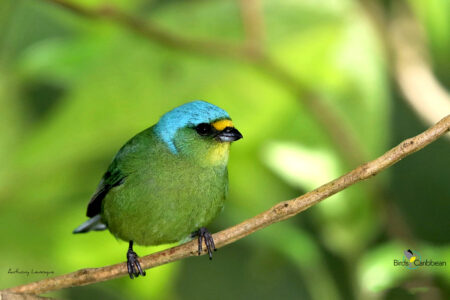
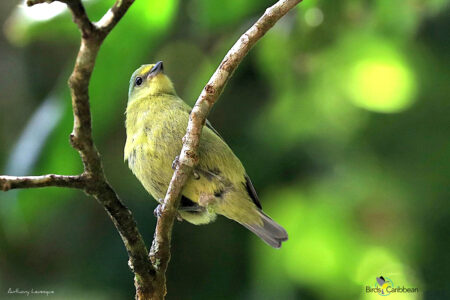
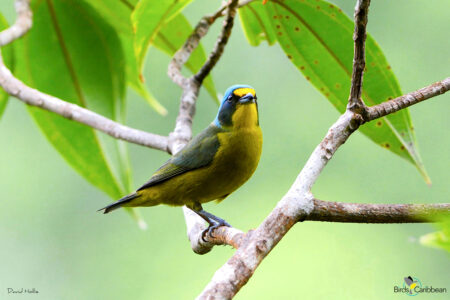
Activity of the Day
FOR KIDS : Honey bees feed on both nectar and pollen. The nectar is for energy and the pollen provides protein and other nutrients. They find their food through sight and smell.
In todays activity you will do an experiment to test how great bees are at remembering where they can find food!
With the help of an adult, you will need to gather the following items before you get started:
- Pan or microwave-safe dish
- Water
- 50g sugar
- 5 clear dishes
- 4 pieces of white paper
- 1 piece of red paper
Then download and follow you simple instructions and get started finding out more about bees!
FOR KIDS AND ADULTS : Read all about the latest bird species changes in the Caribbean! This included ‘splitting’ the the former Antillean Euphonia (Chlorophonia musica) has now been differentiated as the Puerto Rican Euphonia (Chlorophonia sclateri), the Hispaniolan Euphonia (Chlorophonia musica), and the Lesser Antillean Euphonia (Chlorophonia flavifrons).

